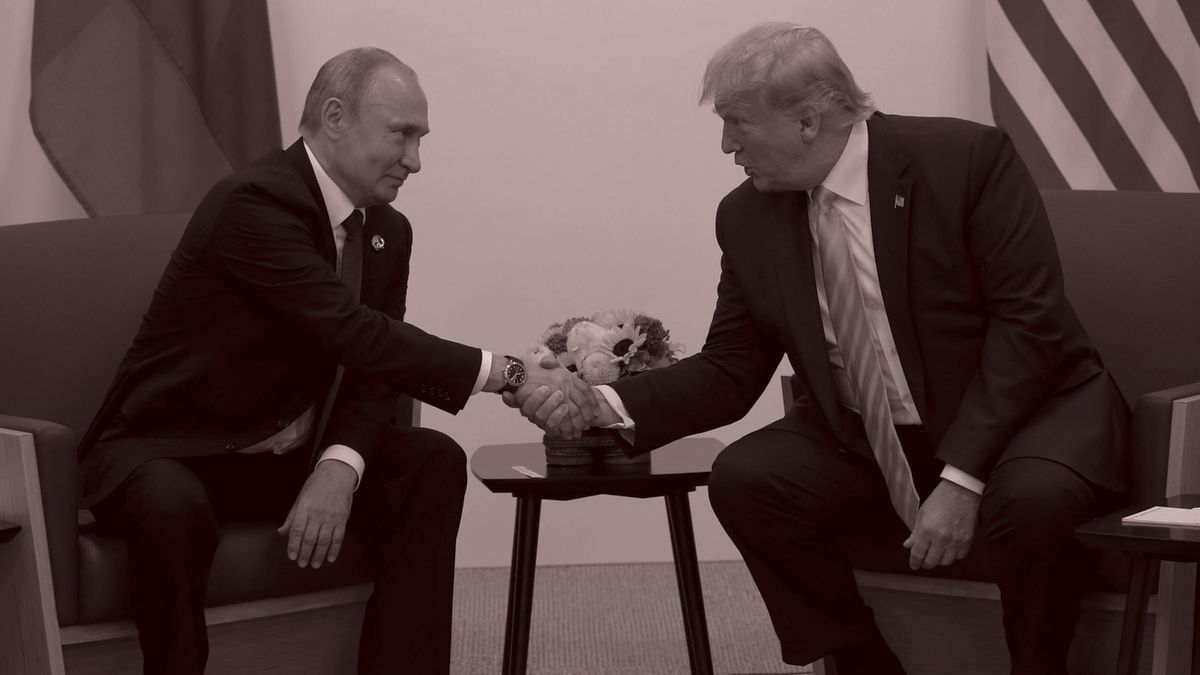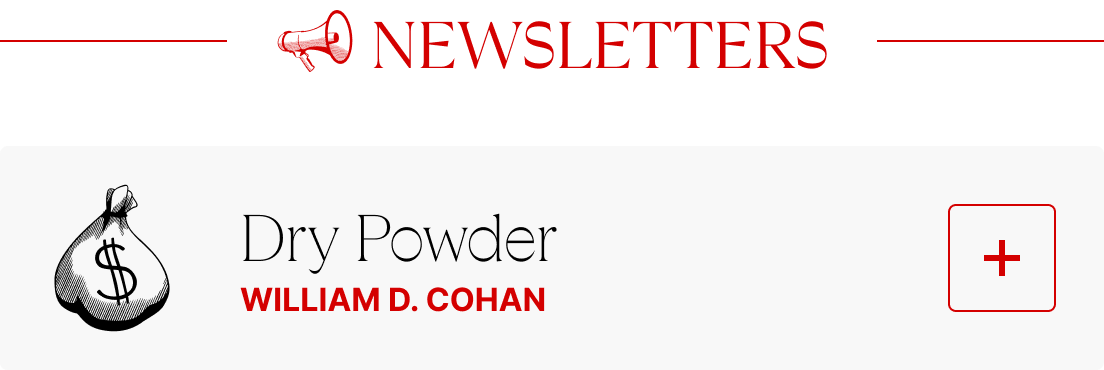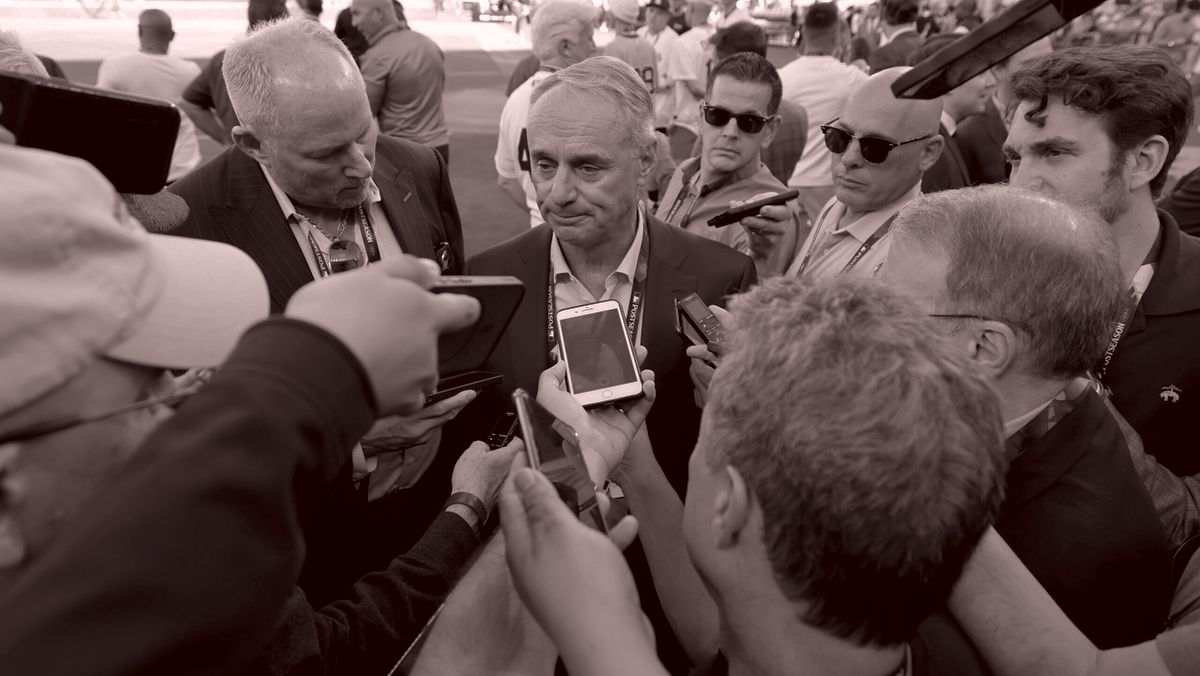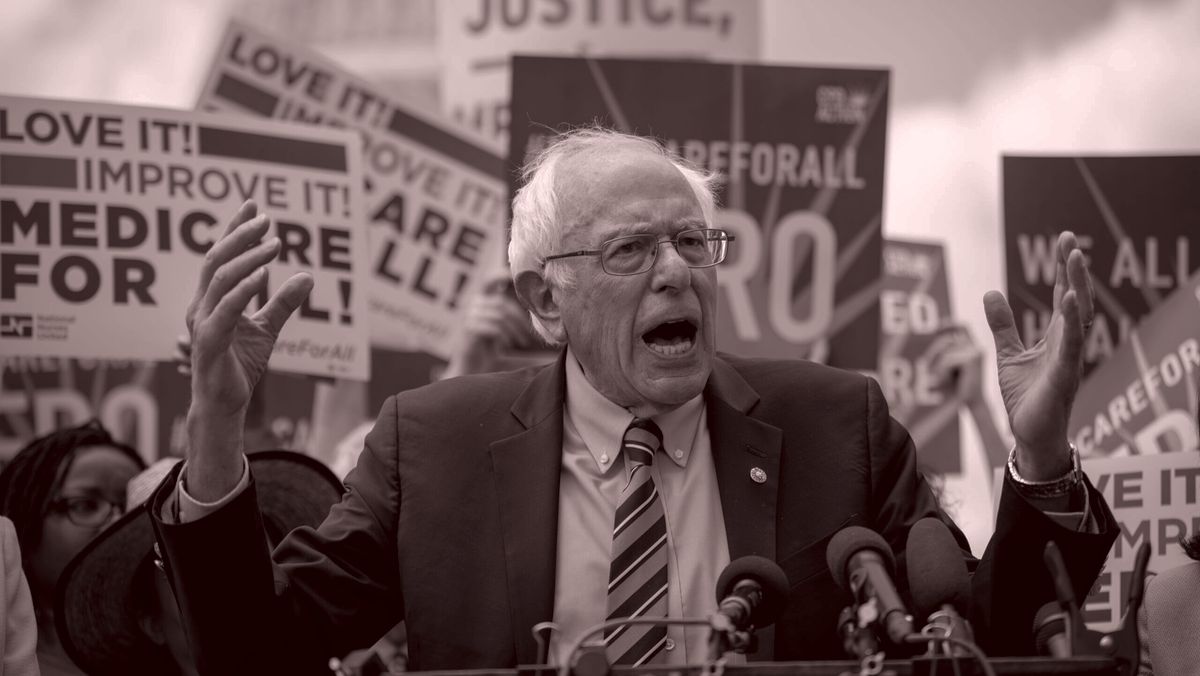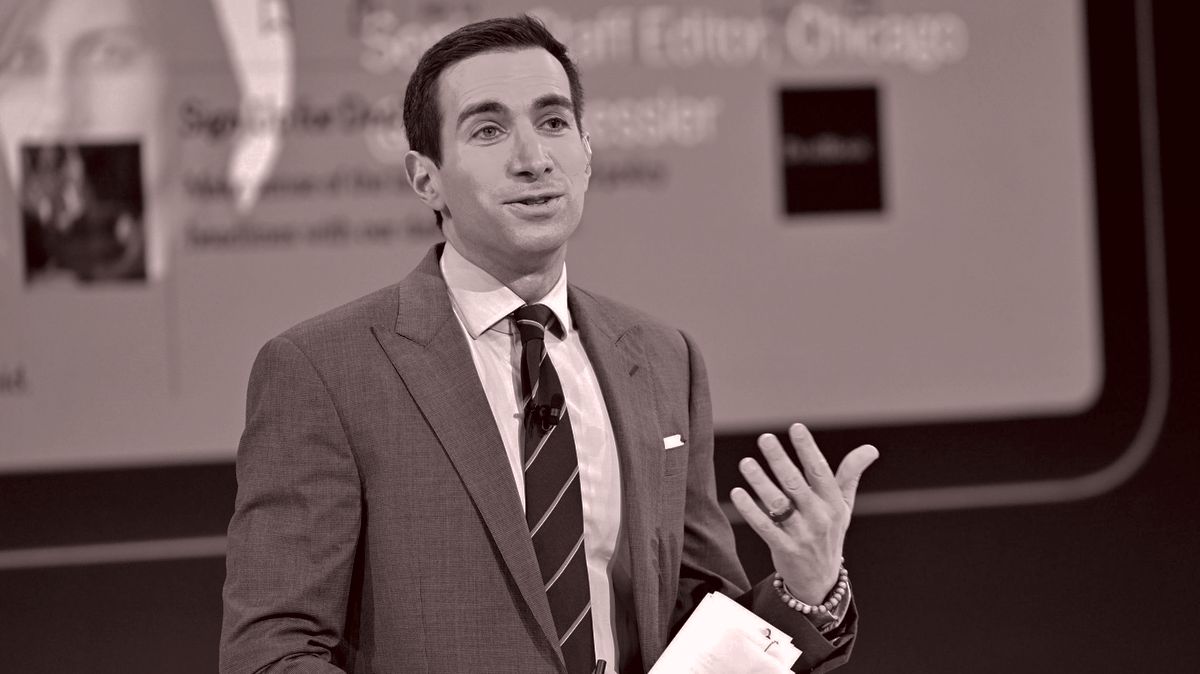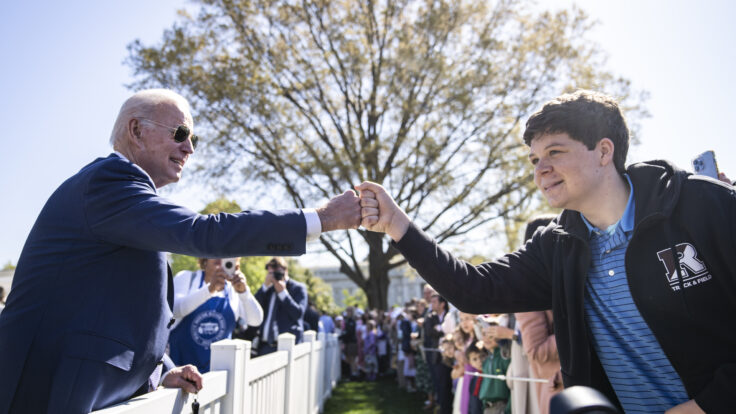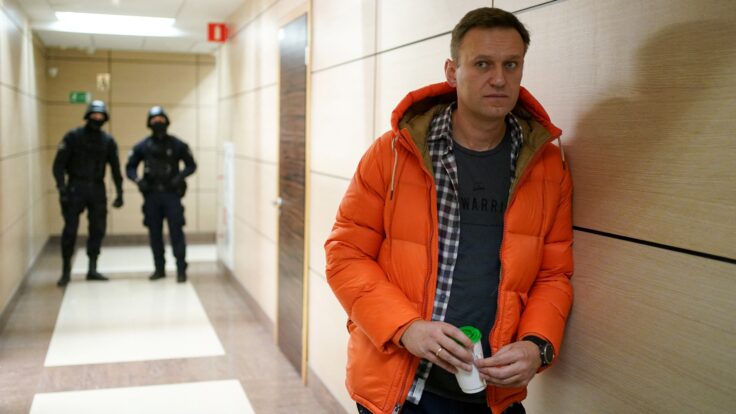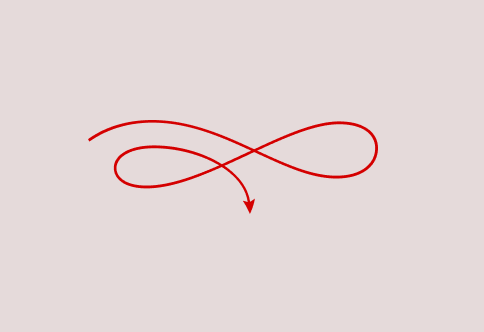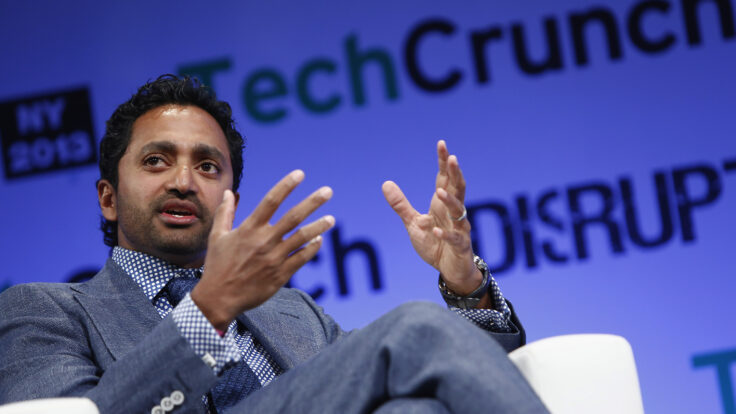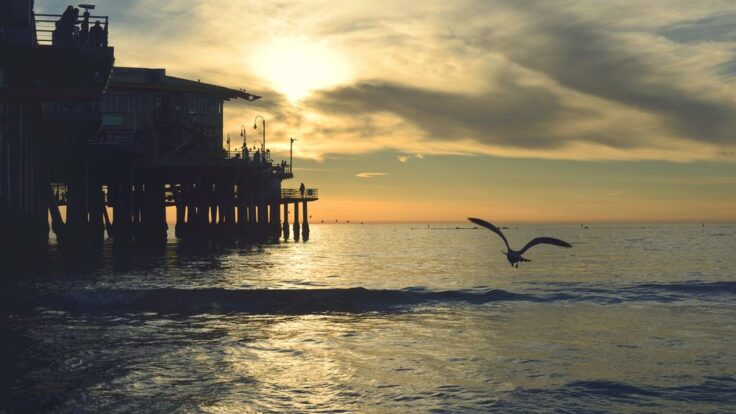Hello, and welcome back to The Best & The Brightest. It’s foreign policy
Monday and I’m your host, Julia Ioffe.
It feels good to say that again, though the past four months have been pretty blissful. Baby Isaac arrived in October, punctually, on the first day of my maternity leave. We named him after my great-grandfather Isaak Bruk, who hailed from Odessa. He was an anarcho-syndicalist and
autodidact who, with the help of the educational opportunities provided by the Bolshevik revolution, turned a third-grade education and apprenticeship with a tinsmith into a career as an aeronautical engineer. More on that and other family (and nonfamily) history in my new book, Motherland, which is finally, finally out in October, and which you can preorder here or
here. (The irony of becoming a mother while finishing up a book called Motherland is not, of course, lost on me.)
It feels far less good, however, to be returning to chronicle this moment. Observing the final weeks of the Biden administration, the Trump transition, and then the first month of
the new administration was like watching the tide get sucked out before the tsunami slams ashore. It has, as any non-Republican in town will tell you, been far worse than anything anyone could have imagined, myself included.
But, in many ways, my return couldn’t have been more perfectly timed. In tonight’s issue, reflections on the third anniversary of Russia’s unprovoked, full-scale invasion of
Ukraine. Yes, we can say that here, because it’s the truth.
But first…
|
- The
Macron-Trump summit: French President Emmanuel Macron made a pilgrimage to the Trump White House today to lobby for Ukraine—just as the U.S. was voting with Russia at the U.N. against condemning Russia’s invasion of Ukraine and demanding an immediate withdrawal. (Who else voted with the U.S. and Russia against that
no-brainer of a resolution? Israel, Hungary, Haiti, Nicaragua, Belarus, North Korea, and Niger. Those are our allies now, apparently.)
Macron, as well as the French press, bent over backward to flatter Trump and keep the meeting friendly. The two palled around and did their weird handshake thing
over and over again. It was clearly an attempt by Macron, who fancies himself something of a Trump whisperer, to get the president to change his mind by playing good cop to Friedrich Merz’s
bad cop. But there were moments when Macron couldn’t refrain from setting the record straight. The first was to correct Trump after he said Europe had sent Ukraine less aid than the Americans (false) and that it had been in the form
of a loan that Ukraine was repaying to Europe but not the U.S. (also false).
The second was less a fact-check than a warning. “In 2014, all predecessors negotiated peace with President Putin,” Macron said at their joint presser. “But because of the lack of … security guarantees, President Putin
violated this peace. And I had several discussions, especially [in] the beginning of 2022, several times, seven hours with President Putin 15 days before he launched the attack. He denied everything.” In other words, the lack of a peace agreement isn’t because Zelensky is a bad dealmaker, or because the world was just waiting for Trump (as he claimed today). It’s because Putin does not want peace in Ukraine and because he only understands force. Not “deals.”
- France at the kids’ table: Meanwhile, in an interview today, Putin said he doesn’t see why Europe needs to be involved in the negotiations over Ukraine. That this happened while Macron was visiting Washington to muscle his way back to the table was not an accident. Recall what happened in the days preceding the invasion: Macron arrived in Moscow, spent hours
talking to Putin (at a comically long table), and, upon leaving for Kyiv, said he’d gotten Putin to agree to deescalate. But no sooner had Macron’s plane taken off than Putin’s spokesman cut the legs out from under him. “Moscow and Paris can’t do any deals,” he said. The suggestion being that Russia doesn’t negotiate with
France (a small European country that Putin imagines is an American colony); it negotiates with only America (a big superpower on par with Russia’s image of itself). Clearly, Putin now has a partner in that view.
- Nice country you got there…: It’s hard to see the mineral deal that the Trump administration is trying to foist on Ukraine as anything other than a Tony Soprano–style shakedown of a partner and ally at a time of need. But then again, America’s
allies are now the AfD, Viktor Orbán, and Vladimir Putin. Make no mistake: This is extortion. Not only is the several-hundred-billion-dollar deal worth far, far more than the U.S. sent in aid to Ukraine, but much of that aid was earmarked to replenish American stockpiles by purchasing American military equipment for the Pentagon after it sent its old stuff to Ukraine. In other words, most of that money stayed here in the U.S.—especially in red
states.
Moreover, the agreement gives nothing to Ukraine: no security guarantees, no future aid, nothing but an extraneous “Reconstruction Investment Fund.” It’s just a license to plunder, built on the flimsy notion that the Trump administration would be more likely to defend Ukraine if it had economic
interests there. (Let’s recall what companies actually do when war breaks out: They leave.) As Zelensky correctly pointed out, the U.S. doesn’t impose these sorts of terms on any other ally that receives American military assistance—not Israel, not Saudi Arabia, not Egypt. But then again, despite Trump’s rhetoric, Zelensky is not the kind
of authoritarian that the American president normally likes. If Trump truly thought Zelensky were a dictator, he’d speak to him much more respectfully.
|
Now, here’s Abby with another must-read congressional report…
|
|
|

|
Abby Livingston
|
|
Honeymoon’s Over for the G.O.P.
|
As the DOGE wars rage on in Washington, Republican House members scattered home to their
districts and faced constituents’ uncorked fury over the efforts of Elon Musk and Donald Trump to seize the power of the purse from Congress. While the level of anger may have come as a surprise to many, this does fit an historic pattern. While 2017 brought the Women’s March, Republican members really began to feel the backlash only during the Presidents’ Day recess, exactly eight years ago.
But the geographic sweep of the angry town halls this time around—in Georgia, Ohio, Oregon, and everywhere in between—was far greater than my sources anticipated, even last week. Local news cameras captured waves of unflattering protests at the offices or public appearances of vulnerable Republicans, including Ken Calvert, Juan Ciscomani, Tom Kean Jr., and David Valadao. As a Capitol Hill
Republican operative characterized to me, the Trump and Elon slash-and-burn approach “energized Republicans, but it also woke Democrats up when they were quite depressed.” The obvious next step for Republicans is to avoid town halls altogether, which is exactly what they did in 2017.
Regardless, it’s hard to imagine smoother sailing awaits the G.O.P., with spring heralding internal fights over tax cuts, spending cuts, and a potential shutdown and credit default. Ohio Republican Rep.
Troy Balderson best captured Republicans’ conundrum—caught between angry constituents and a vengeful White House—when he said at a
local Chamber of Commerce event that “Congress has to decide whether or not the Department of Education goes away. Not the president, not Elon Musk”… then promptly walked it back (via X, of course).
Remember,
this was supposed to be the party’s honeymoon phase. If Republicans like Balderson, Georgia’s Rich McCormick, and Oregon’s Cliff Bentz are catching hell back home in safe districts, one has to wonder what kind of pressure Republicans in vulnerable districts in the SALT states—California, New York, and New Jersey—will be feeling once the tax cut negotiations advance, on top of everything else people are mad about.
|
|
|
And now, on to the main event…
|
|
|
Precisely three years into Russia’s war on Ukraine, we’re right back where we started in
many ways. “At some point, American ambitions will collide with Russian realities,” one Republican foreign policy insider told me, “which is to say, the same story we have watched about a half-dozen times before.”
|
|
|
It’s been three years since Vladimir Putin sent nearly 200,000 troops
across the border into Ukraine to finish what he’d started in 2014: ending Ukraine’s drift toward the West. In the months directly preceding the full-scale invasion in 2022, very few people thought it would actually happen. Russians believed that their troop buildup on the border was just a negotiating tactic; Washington and Moscow were involved in furious negotiations to head off a possible war; and other Western leaders, like France’s Emmanuel Macron, were making sojourns to
the Kremlin to persuade Putin not to pull the trigger.
At the time, Putin made a series of impossible demands—that Ukraine forswear NATO and E.U. membership, that the country be disarmed, that its political leadership be replaced—while offering no room for compromise. Those who warned that Putin wasn’t negotiating in good faith, and that Russia would invade anyway, were dismissed by the far right and far
left as “warmongers.”
Now, three years into this brutal war, we have, in some ways, come full circle, with an American president trying to negotiate with Putin while the peanut gallery claims that Putin can be negotiated with. Once again, Putin is demanding that NATO rescind its proto-invitation to Ukraine, that Ukraine disarm unilaterally, and that Ukraine hold new elections with the aim of getting a new,
more Moscow-friendly government into power.
There are, of course, a few key differences. The war that the so-called realists believed wouldn’t happen has happened. Hundreds of thousands of Ukrainians have been killed and wounded, their cities and civilian infrastructure subjected to constant Russian bombardment. Russia now holds about 20 percent of Ukraine’s territory—and is gaining more every day.
Most importantly: The American president leading the negotiations is on Russia’s side.
Trump and his acolytes seem to believe that he is a revolutionary strategist. They delight in the agonies of D.C.’s permanent class over the reversal of decades of American foreign policy—which is precisely the point, they argue. They don’t see a problem in Trump echoing the talking points of the Russian president who, to them, is a white Christian nationalist and therefore a
more natural ally than the feckless, effeminate bureaucrats in Paris and Berlin. Why not team up with a fellow nationalist beating up the small guy—and get some of the little guy’s lunch money while we’re at it?
|
In some ways, Trump is continuing a storied tradition of American presidents declaring
their intention to reset relations with Putin where all their predecessors had failed. George W. Bush looked into Putin’s eyes and saw his soul, Barack Obama offered a literal reset button (or tried to), and Trump, in his first term, notoriously cozied up to Putin and reveled in his perceived flattery.
Each of them got burned. At Munich, in 2007, Putin vowed to throw sand in America’s geopolitical gears after Bush ignored his disapproval of the invasion of Iraq. He then invaded Georgia mere months after Bush opened NATO’s door to the former Soviet republic. Putin sent troops into Ukraine on Obama’s watch in 2014 and worked to ensure his secretary of state, Hillary Clinton, lost the White House two years
later. (Putin accused her of trying to overthrow him in 2011.)
Joe Biden, having served as Obama’s vice president, was the first president to come into office with a clear-eyed view of Putin and the paltry prospects of détente. In the
brief window before a series of foreign policy shitstorms consumed Biden’s presidency, his strategy for dealing with Russia was to simply keep the issue at bay. And yet, as we now know, even Biden got burned. Putin, as Georgetown professor Angela Stent once said, refused to be parked.
Trump has so far avoided his predecessors’ fate. Though Moscow was disappointed in what they received during Trump’s first term—more sanctions on Russia, lethal aid for
Ukraine—the Kremlin assumed that his natural, pro-Russia instincts were simply stymied by the “adults in the room,” the establishment types who, in Putin’s view, curbed what could have been a very Russophilic agenda. (Although Moscow clearly preferred Trump to Biden, as I reported last year, they weren’t exactly sure what they would get with him back in
office.)
This time around, Trump is giving Moscow more than they could have ever imagined: blaming Ukraine for starting the war, pushing Zelensky to sign a mining agreement that would pillage Ukraine’s natural resources without offering Kyiv anything in return, and promising to end Russia’s isolation without asking Moscow to give up any of its maximalist demands. This time around, the adults in the room are experienced Washingtonians, but they’re there to ensure that Trump’s pro-Putin
instincts are not curbed but rather turned into policy.
|
That doesn’t mean, however, that Putin won’t bite Trump the way he did his predecessors.
In Putin’s worldview, Russia is America’s equal and fellow superpower. He has been insisting that he be treated as such, and that the world of small countries (like Ukraine) be divvied up among the big players, Yalta-style. He is also, as listeners of the
About a Boy podcast will remember, someone who sees the world as a zero-sum game: If his negotiating partner is winning, that means he’s losing.
Moreover, he clearly doesn’t have much respect for Trump. (Fiona Hill, Trump’s
former Russia hand, recalled that Putin purposely brought young, attractive interpreters to his meetings with the president in order to distract him.) Putin likes Trump insofar as he can extract concessions and use him to destroy NATO, the G7, and other clubs to which the Russian leader is no longer invited. But while Trump clearly sees Putin as a natural ally, Putin doesn’t
return the favor. Because Putin doesn’t have allies. He has people he can use.
What happens when Putin and Trump inevitably disagree on something—say, the arctic territory in which they’ve both shown such interest? Or Trump doesn’t bend far enough, or reaches the end of his usefulness? Or when Putin violates whatever deal Trump hammers out on Ukraine? “At some point, American ambitions will collide with
Russian realities,” one Republican foreign policy insider told me, “which is to say, the same story we have watched about a half-dozen times before.”
The reality is that Putin has much bigger ambitions than just keeping Ukraine out of NATO or holding on to some territory. He wants to eliminate Ukraine as a real and sovereign state, and he hasn’t changed his goals there or anywhere else. America, meanwhile, has changed
administrations and continues to do what it always does. The new guy comes in thinking he can succeed where all his predecessors have failed, en route to crashing against the exact same rocks: Putin’s desire to dominate.
|
|
|
Join Emmy Award-winning journalist Peter Hamby, along with the team of expert journalists at Puck, as they let you in on the
conversations insiders are having across the four corners of power in America: Wall Street, Washington, Silicon Valley, and Hollywood. Presented in partnership with Audacy, new episodes publish daily, Monday through Friday.
|
|
|
Unique and privileged insight into the private conversations taking place inside boardrooms and corner offices up and down
Wall Street, relayed by best-selling author, journalist, and former M&A senior banker William D. Cohan.
|
|
|
Need help? Review our FAQ page or contact us for assistance. For brand partnerships, email ads@puck.news.
You received this email because you signed up to receive emails from Puck, or as part of your Puck account associated with . To stop receiving this newsletter and/or manage all your email preferences,
click here.
|
Puck is published by Heat Media LLC. 107 Greenwich St, New York, NY 10006
|
|
|
|

